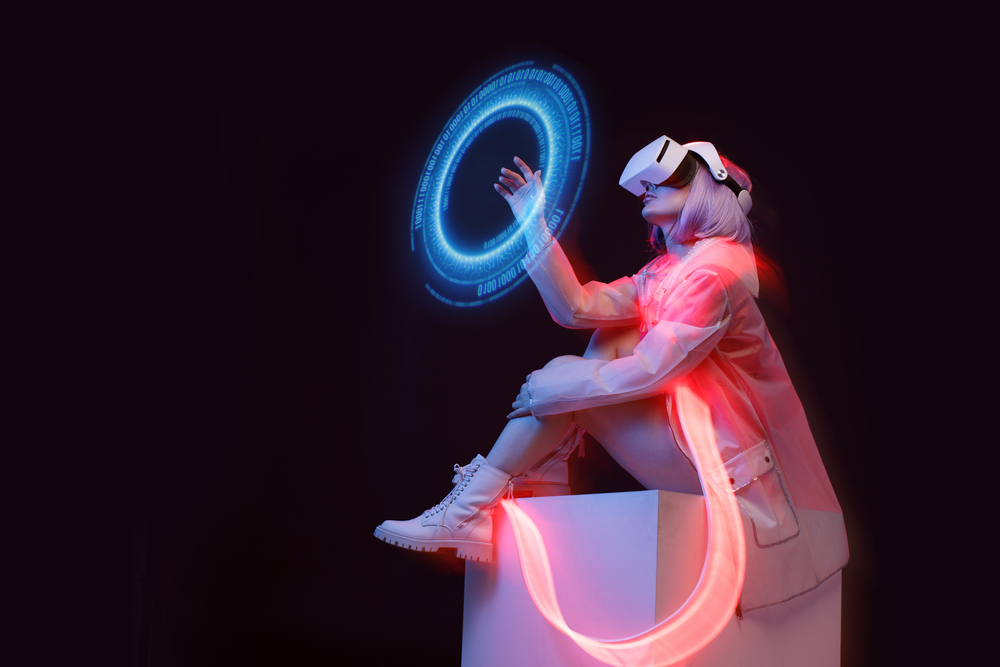Holographic Haute Couture: Fashion's Digital Frontier
In a dazzling fusion of technology and haute couture, the fashion world is witnessing a revolutionary trend that's redefining the boundaries of wearable art. Holographic fashion, once confined to the realm of science fiction, has emerged as a cutting-edge medium for designers to push the limits of creativity and innovation. This mesmerizing intersection of fashion and futurism is not just transforming runways; it's reshaping our very concept of clothing, challenging traditional notions of materiality, and opening up new possibilities for self-expression in the digital age.

Initially, holographic elements were used as mere accents or novelties in fashion shows. Designers experimented with holographic fabrics that shimmered and changed color under different lighting conditions. These early forays were met with curiosity and skepticism, often dismissed as gimmicks rather than serious fashion statements.
Technological Breakthroughs
The true revolution in holographic fashion came with the development of wearable holographic projectors. These miniaturized devices, integrated seamlessly into garments, could project three-dimensional images and patterns onto the wearer’s body or the surrounding space. This breakthrough allowed designers to create dynamic, ever-changing outfits that could transform at the touch of a button or in response to environmental stimuli.
Parallel advancements in augmented reality (AR) and virtual reality (VR) technologies further propelled the holographic fashion movement. AR apps enabled users to virtually try on holographic garments, while VR fashion shows transported audiences into immersive, digital runways where the laws of physics no longer applied.
Pioneers of the Digital Drape
Several visionary designers have emerged as leaders in the holographic fashion movement. Iris van Herpen, known for her avant-garde creations, has been at the forefront, incorporating holographic elements into her intricate designs. Her 2022 collection, Metamorphosis, featured garments that seemed to morph and undulate as models walked the runway, blurring the line between fabric and light.
Another notable figure is Zac Posen, who collaborated with holographic technology company Looking Glass Factory to create a line of dresses that display moving, three-dimensional images. These pieces not only showcase the wearer’s style but also serve as canvases for digital art, turning fashion into a truly interactive experience.
The Intersection of Fashion and Technology
Holographic fashion represents more than just a new aesthetic; it’s a convergence of multiple disciplines. Fashion designers are now working closely with software engineers, holographic specialists, and even neuroscientists to create garments that respond to brainwaves or emotional states.
This interdisciplinary approach has led to innovations like mood-responsive clothing that changes color or pattern based on the wearer’s emotions, or garments that can display real-time data visualizations. The possibilities seem limitless, with some designers even exploring the concept of clothing that can project a completely different appearance in the digital realm, allowing wearers to have distinct physical and virtual identities.
Challenges and Controversies
Despite its potential, holographic fashion faces several challenges. Critics argue that the technology is still too cumbersome and expensive for widespread adoption. There are also concerns about the environmental impact of producing and disposing of the electronic components required for these high-tech garments.
Additionally, the rise of holographic fashion has sparked debates about authenticity and the nature of fashion itself. Some traditionalists argue that clothing should be tactile and material, questioning whether projections and digital imagery can truly be considered fashion.
The Future of Fashion: Digital and Tangible
As holographic technology continues to advance and miniaturize, it’s likely that we’ll see more integration of digital elements into everyday clothing. The line between physical and digital fashion may become increasingly blurred, with augmented reality allowing people to view and interact with holographic elements in real-time.
The implications extend beyond personal style. Holographic fashion could revolutionize industries like advertising, where clothing could become dynamic billboards, or healthcare, where garments could display vital signs or medical information.
A New Era of Creative Expression
Holographic fashion represents a paradigm shift in how we think about clothing and self-expression. It offers a canvas limited only by imagination, where garments can be as changeable as our moods and as dynamic as our digital lives. As this technology becomes more accessible, it has the potential to democratize high fashion, allowing individuals to become designers of their own constantly evolving wardrobes.
The fusion of fashion and holography is more than a trend; it’s a glimpse into a future where our physical and digital identities are seamlessly intertwined. As we stand on the brink of this new era, one thing is clear: the future of fashion is bright, dynamic, and holographic.





